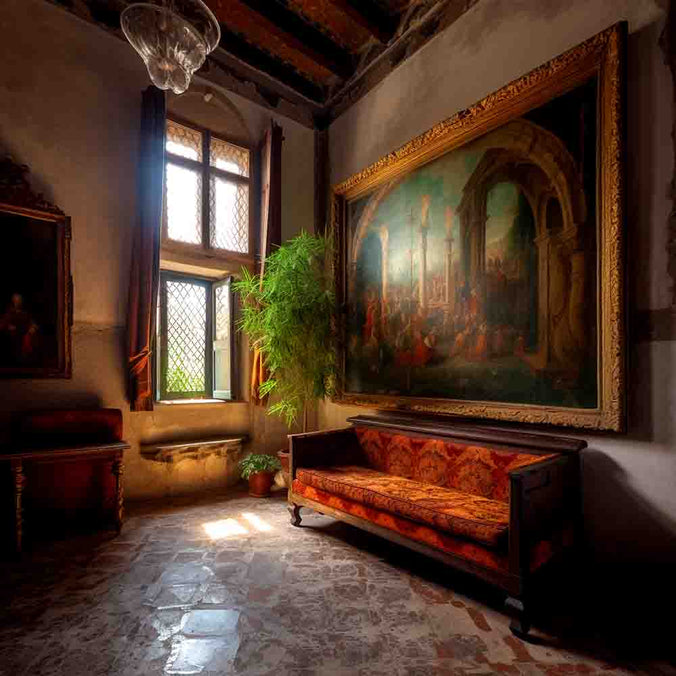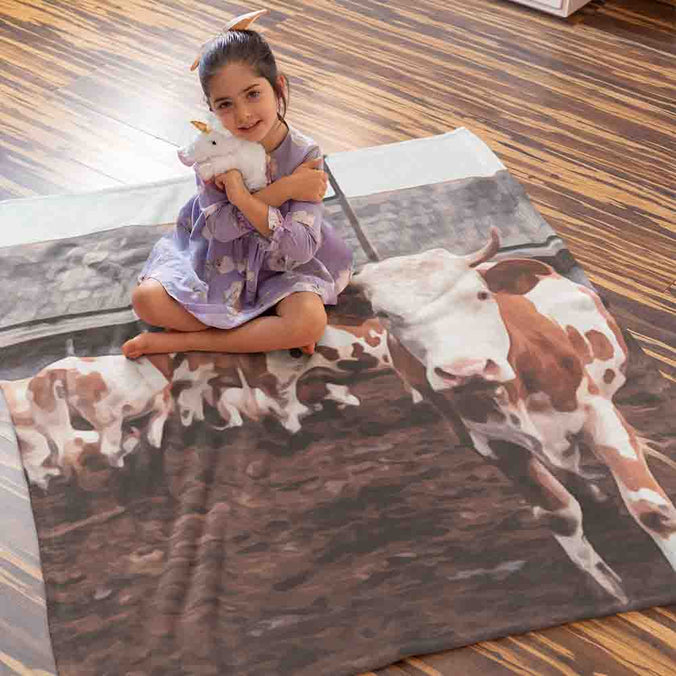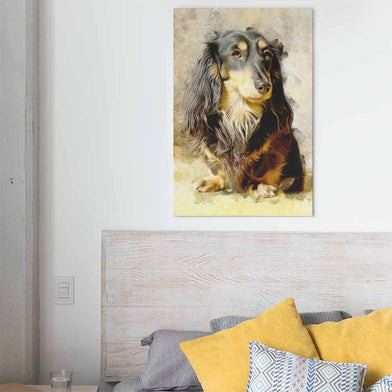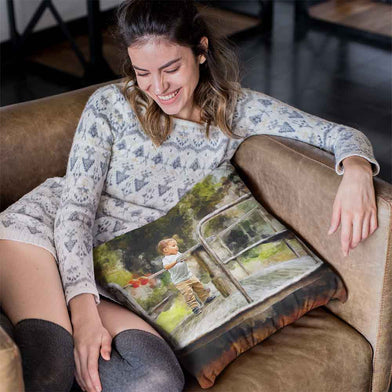What is Wall Art in Home Décor and Why Is It Important?
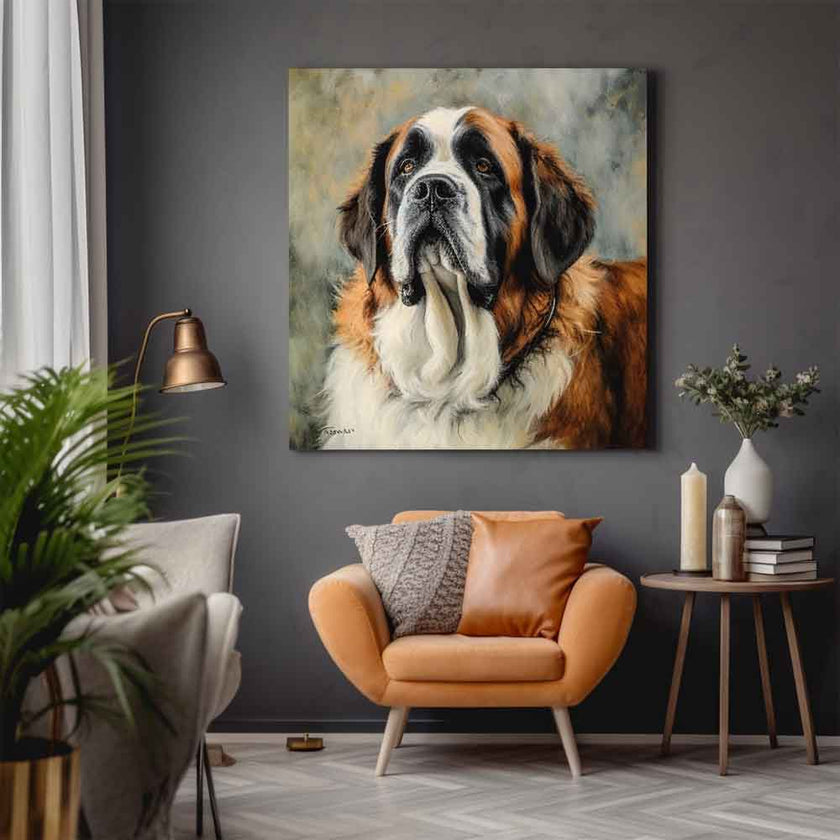
What is Wall Art in Home Décor and Why Is It Important?
Wall art refers to various forms of artistic decorations, such as canvas paintings, framed prints, and other creative embellishments, designed to be displayed on walls. The ideal wall art for your home is determined by factors like the room's theme, color palette, and your individual taste, encompassing options like canvas, metal, wood, and acrylic prints, calendars, photographs, and clocks.
What Types of Wall Art Are There?
There are various types of wall art, including but not limited to:
- Paintings: Traditional and modern paintings can add a touch of sophistication and elegance to your home. They can be done in various mediums such as oil, acrylic, or watercolor.
- Photographs: High-quality photographs can capture memorable moments, stunning landscapes, and interesting subjects, making them an excellent choice for personalizing your living space.
- Posters and prints: These are affordable and widely available options that allow you to display your favorite movies, music, or art in your home.
- Wall sculptures: Three-dimensional wall art can bring depth and character to a room, making a striking statement.
- Tapestries and textiles: These can add warmth, texture, and color to your walls, creating a cozy and inviting atmosphere.
- Murals: Large-scale artworks painted directly onto walls can transform a room into a unique and immersive space.
Creating a Gallery Wall and Wall Hanging Ideas
A gallery wall can showcase various forms of artwork, from digital photos and art prints to polaroid's. To create an engaging gallery wall, first, find a suitable location and choose the appropriate hanging hardware. Hang the lowest frame about seven to ten inches above your furniture, and maintain even spacing between multiple pieces. To save money, consider hanging a few non-framed pieces to fill awkward spaces or break up the gallery wall.
Mixing and Matching Art Styles
An exciting way to create a dynamic gallery wall is to mix and match different art styles, such as combining abstract pieces with more traditional art forms. This creates visual interest and allows for a more personalized and unique wall display. Experiment with various color schemes, sizes, and frame styles to find the perfect balance and harmony for your home.
What Impact Wall Art has on Home Décor
Wall art adds personality to your home, conveying your lifestyle and individuality to visitors. It can serve as an accent piece or establish a color scheme for a room. When thoughtfully chosen, wall art can create a focal point, drawing attention and sparking conversation. Moreover, wall art can evoke positive emotions, making your home feel more comfortable and uplifting.
What is the Ideal Location for Wall Art?
Before hanging your artwork, consider where it will look best, and ensure that the height is at eye level, which is approximately 57-60 inches from the floor. When hanging multiple pieces, leave ample space between each print and ensure they are hung six to twelve inches off the floor.
Making Personalized Art Prints
Creating your own wall art prints allows you to add a personal touch to your home. This is why My Photo Art exists! We create custom artwork from your favorite photo that we then print on custom canvas prints that are ready to hang anywhere you can. When hanging your prints, ensure they are evenly spaced and approximately 56 inches off the floor.
Hanging Wall Art: Tips and Tricks
To hang your wall art, level it first to prevent misalignment, and use rubber bumpers on the bottom corners to create friction between the piece and the wall. When hanging multiple pieces, start at the center of the group, with the center of the cluster at 57 inches, and evenly space the rest of the group around this point.
What is the Role of Wall Art in Room Design?

Wall art can serve as an accent or a focal point in a room, enhancing its mood and adding visual interest. When paired with the right paint colors, it can establish a base color theme and accents. Unconventional shapes, such as round or irregular pieces, can elevate a room's design, creating a unique and eye-catching display. When selecting wall art, consider the room's existing style, color palette, and overall theme to ensure a cohesive and harmonious appearance.
The Significance of Art in Interior Design
Art is a powerful tool in interior design, conveying personality, style, and philosophy. It complements other design elements, such as furniture and decorative accessories. However, it's essential to find a balance between personal preferences and design principles when choosing art for your home. Art should spark conversation and thought without competing with other items in the space. Ultimately, art can enhance your quality of life and serve as a beautiful focal point in any room.
Incorporating Wall Art into Various Interior Styles

Wall art can be seamlessly incorporated into various interior design styles. Here are some examples:
- Minimalist: In minimalist interiors, less is more. Choose simple, high-impact pieces that complement the room's color palette and clean lines.
- Modern: Modern design often features bold colors and geometric shapes. Opt for abstract or contemporary pieces that accentuate these elements.
- Traditional: In traditional interiors, classic paintings and timeless prints can add a touch of elegance and sophistication.
- Industrial: Industrial spaces can benefit from metal wall sculptures, vintage prints, or black-and-white photography that emphasizes the raw, urban feel.
- Bohemian: Bohemian interiors call for eclectic and unconventional pieces, such as vibrant textiles, mixed-media collages, or handcrafted items that reflect a free-spirited and artistic lifestyle.
- Scandinavian: In Scandinavian design, prioritize simplicity, functionality, and natural elements. Choose artwork that embodies these qualities, such as minimalist prints, nature-inspired themes, or monochromatic photography.
What Wall Art For Which Room?
Different rooms in your home serve different purposes, and the wall art you choose should reflect the room's function and atmosphere.
- Living Room: The living room is a communal space for relaxation and entertainment. Select artwork that creates a welcoming and engaging atmosphere, such as a large statement piece or a well-curated gallery wall.
- Bedroom: The bedroom is a private sanctuary for rest and rejuvenation. Opt for soothing, calming artwork that promotes relaxation and reflects your personal taste.
- Home Office: In a home office, choose artwork that fosters productivity and creativity, such as motivational quotes, inspiring landscapes, or pieces that reflect your career or hobbies.
- Dining Room: The dining room is a space for gathering and enjoying meals. Select artwork that enhances the room's ambiance, like food-related prints or elegant, classic pieces.
- Bathroom: For the bathroom, choose moisture-resistant artwork that complements the room's color scheme and adds a touch of sophistication or whimsy.
- Kids' Room: In a child's room, choose fun, colorful, and educational artwork that reflects their interests and sparks their imagination.
Caring for Your Wall Art
Proper care and maintenance are essential for preserving the beauty and longevity of your wall art. Here are some tips:
- Dust and clean your artwork regularly using a soft cloth or duster to prevent the buildup of dust and grime.
- Avoid hanging artwork in direct sunlight, as UV rays can cause colors to fade over time.
- Keep your artwork away from sources of extreme heat or cold, such as radiators or air conditioning vents, which can cause warping or other damage.
- When cleaning framed art, use a damp cloth to gently wipe the glass, avoiding contact with the artwork itself. For canvas or unframed pieces, use a soft, dry cloth to gently remove dust.
- Periodically check the hanging hardware for signs of wear and replace it as necessary to ensure your wall art remains securely in place.
Wall art plays a significant role in enhancing the overall appearance and atmosphere of your home. By thoughtfully selecting and arranging pieces that reflect your personality and complement the room's function, you can create a visually appealing and welcoming living space. With various types of wall art, including paintings, photographs, posters, and sculptures, there are endless possibilities for personalizing your home décor. Remember to take the room's design style, color palette, and function into consideration when choosing artwork, and don't be afraid to experiment with different combinations and arrangements to create a unique and engaging display. Finally, caring for your wall art will ensure it remains a beautiful and cherished part of your home for years to come.
Leave A Reply
Your email address will not be published. Required fields are marked *

